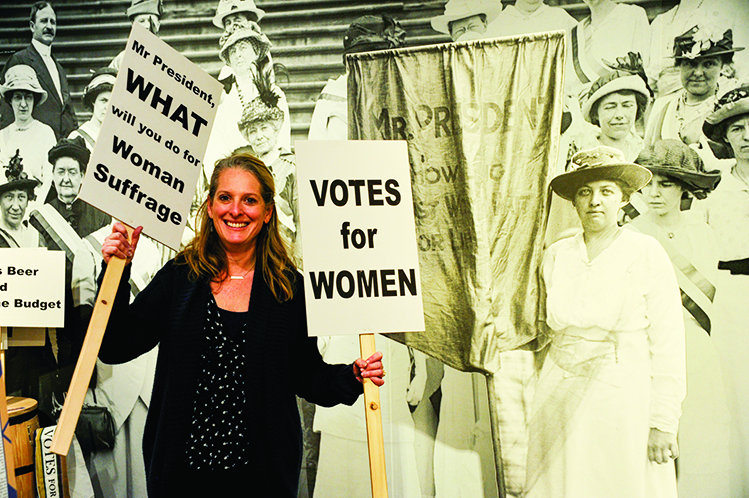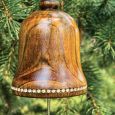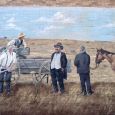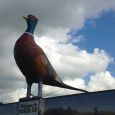The Gift of South Dakota
Subscriptions to South Dakota Magazine make great gifts!
Subscribe today — 1 year (6 issues) is just $29!
Our Suffrage Heroes
Mar 30, 2020
 |
| A new exhibit at the Old Courthouse Museum invites visitors to relive the fight for women’s suffrage. |
Mamie Shields Pyle was walking by a polling place on Election Day in Huron — a place where women were not welcome in the early 1900s — when she overheard a conversation that changed not only her life, but the course of South Dakota history. A man was holding up a ballot and showing a group of workers (some of whom were illiterate) how to vote. “He was threatening their jobs if they didn’t vote the right way,” says Rachel Farrell, executive director of Huron’s Dakotaland Museum. “Mamie got upset and that’s really what got her started in the suffrage movement.”
After a 1910 suffrage referendum failed, she committed herself to changing the minds of male voters. Her dedication included many sleepless nights when she felt work was more important than rest. She served as the South Dakota Universal Franchise League (SDUFL) president until the state’s ratification of the 19th Amendment in 1919. Then she enjoyed the fruits of their labor through the actions of her daughter, Gladys, who became the first woman to serve in the state legislature, the first female Secretary of State and South Dakota’s first woman to win election to the U.S. Senate.
Today Mamie and John Pyle’s Queen Anne home (which is part of the Dakotaland Museum) can be visited by appointment. It is one of several historic places that were integral to the suffrage battle in South Dakota.
John Pickler, a founder of Faulkton, and his wife Alice became suffragists after John was elected as one of South Dakota’s first congressmen. Colleagues called him names, such as “Petticoats Pickler” and “Susan B. Pickler,” because of his support for women.
“He was the only congressman who actually spoke for suffrage,” says Jodi Moritz, a tour guide at the Pickler Mansion in Faulkton.
Alice was one of South Dakota’s most passionate suffragists, serving as president of the South Dakota Equal Suffrage Association and vice president of the SDUFL.
You can visit the Pickler Mansion from Memorial Day to Labor Day, open daily from 1 p.m. to 4 p.m. Known as the Pink Castle because of its unique exterior paint color, the home contains several items that belonged to the Picklers, including a copy of the book History of Woman Suffrage, signed by their friend and houseguest Susan B. Anthony.
Other historic sites related to the suffrage movement include our state capitol in Pierre, the Evans Hotel in Hot Springs, the Hipple House in Pierre and the Homestake Opera House in Lead. The March/April issue of South Dakota Magazine has an extensive feature article on the places and heroes of the women’s suffrage movement, which finally succeeded in 1920.
To help celebrate and commemorate the 100th anniversary, Gov. Kristi Noem assembled the Women’s Vote Centennial Celebration. Visit the group’s website to see events across the state.










Comments